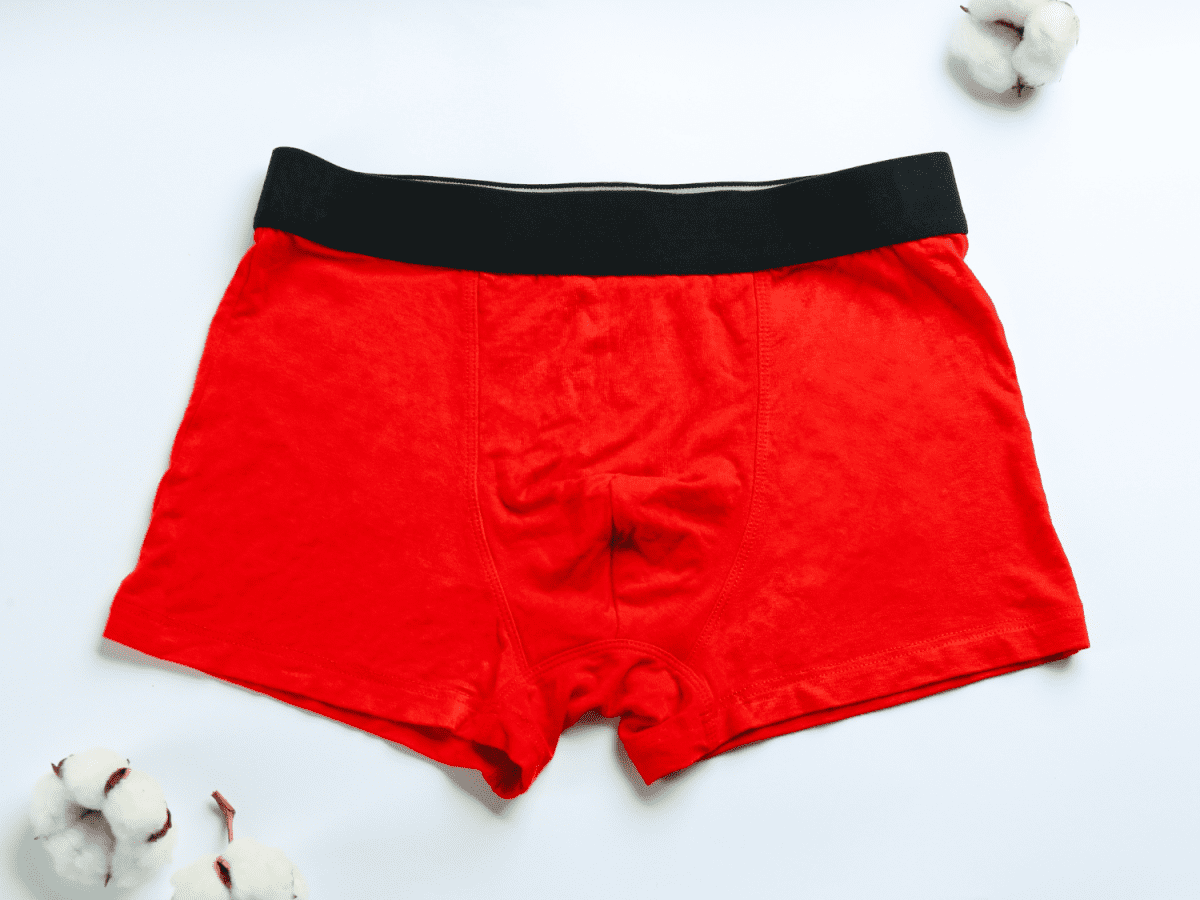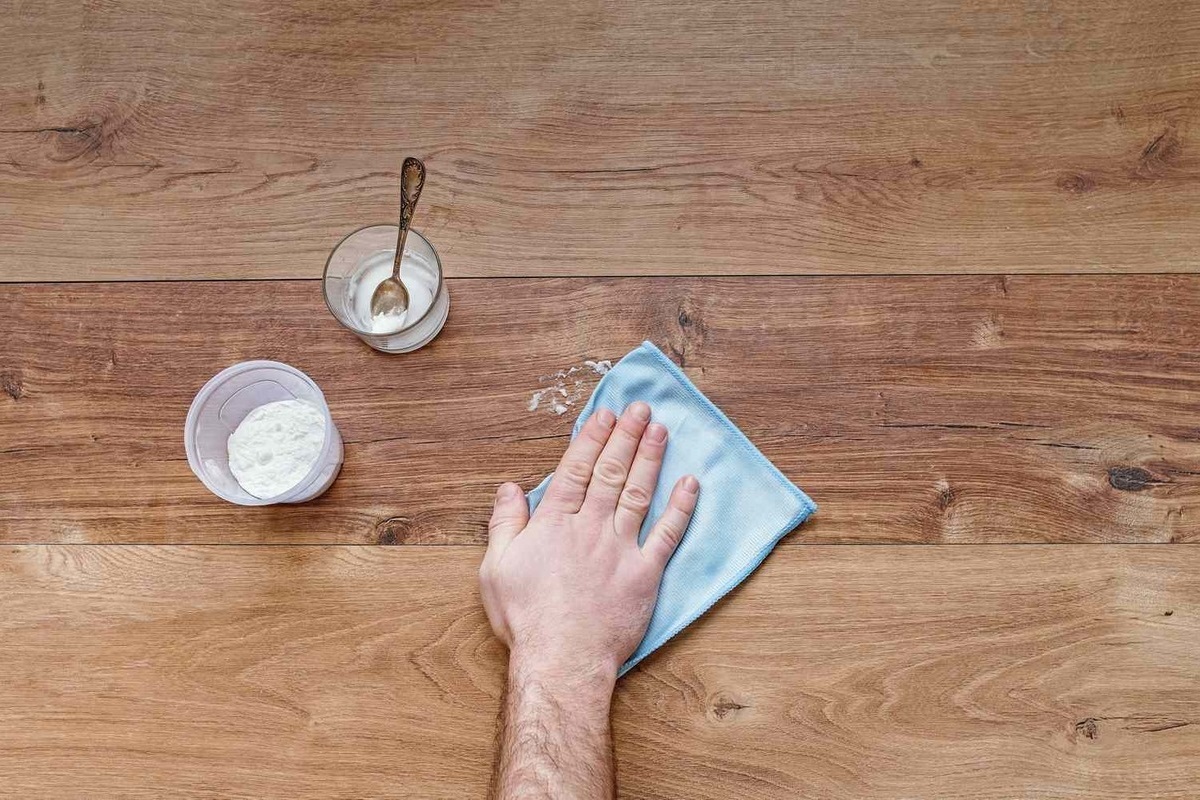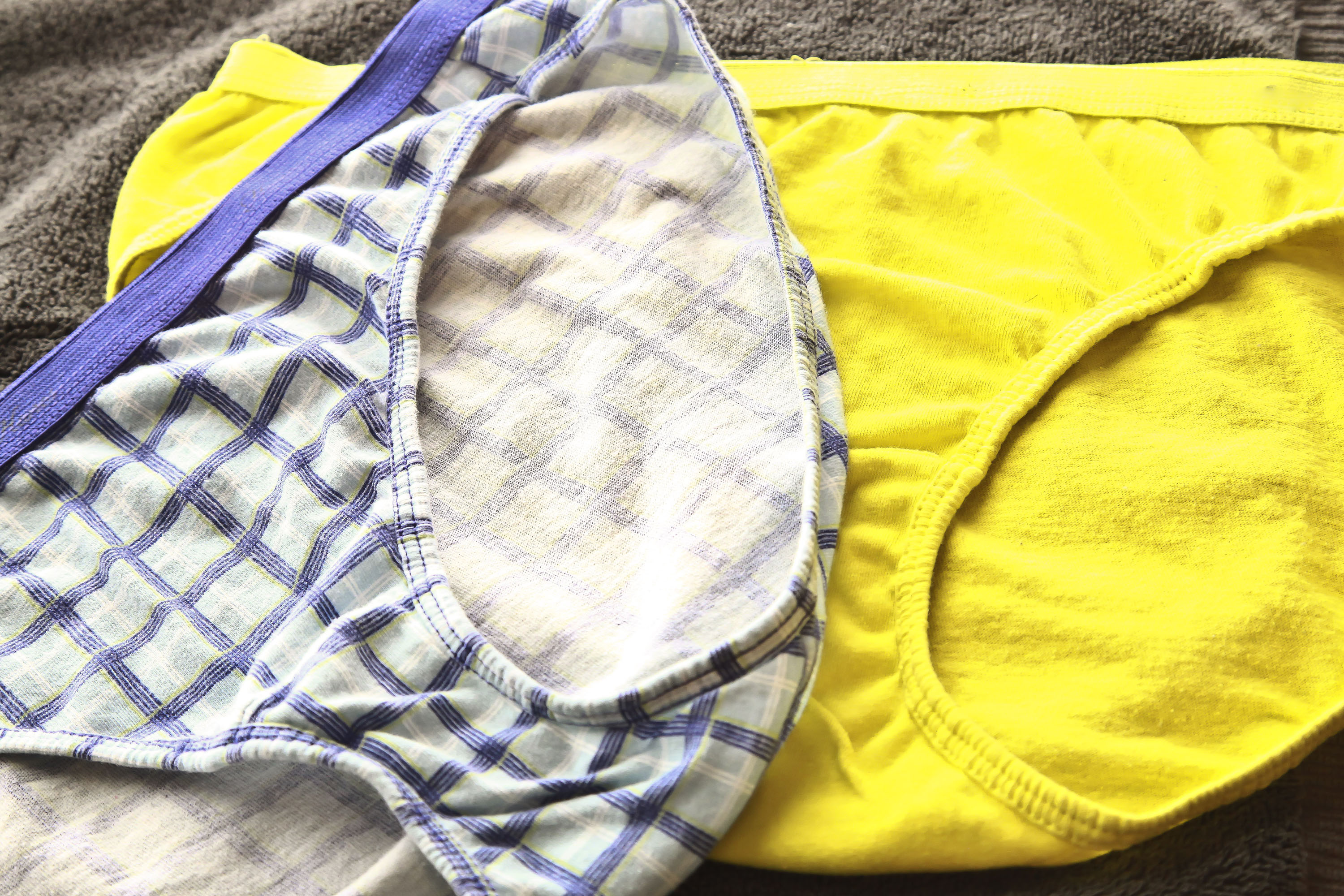Home>How-to Guides>For All>How To Get Rid Of Skid Marks On Floor


For All
How To Get Rid Of Skid Marks On Floor
Modified: September 23, 2023
Learn effective techniques and products to remove skid marks from your floor. This comprehensive guide is suitable for all types of surfaces.
(Many of the links in this article redirect to a specific reviewed product. Your purchase of these products through affiliate links helps to generate commission for Under-tec.com, at no extra cost. Learn more)
Table of Contents
Introduction
Skid marks on floors can be an unsightly and frustrating problem. Whether it’s on hardwood, laminate, tile, vinyl, or concrete, these marks can give your floors a worn-out and dirty appearance. Fortunately, with the right knowledge and cleaning methods, you can easily get rid of skid marks and restore the beauty of your floors.
In this article, we will guide you through the process of removing skid marks from different types of flooring. We will provide step-by-step instructions and helpful tips to ensure that you achieve the best results without causing any damage to your floors.
Understanding what causes skid marks is important to effectively tackle the problem. Skid marks are often caused by the rubber soles of shoes, furniture legs, or heavy objects being dragged across the floor. Over time, these marks accumulate and become more noticeable, especially in high-traffic areas.
While skid marks may seem tough to remove, rest assured that there are several methods that can help you tackle this problem. The approach will depend on the type of flooring you have, as each material has its own unique characteristics and requires specific cleaning techniques.
Before we dive into the specifics of removing skid marks from different types of floors, it’s important to prepare properly. This includes gathering the necessary tools and materials, as well as ensuring the floor is free of any loose debris or dirt. Additionally, taking preventative measures to avoid future skid marks will help to maintain the cleanliness and appearance of your floors in the long run.
Now that we’ve covered the basics, let’s proceed to the next section and learn how to prepare for the cleaning process.
Understanding Skid Marks on Floors
Skid marks on floors can make any space look unkempt and dirty. But before we delve into the various methods of removing these marks, it’s important to understand what causes them and how they affect different types of flooring.
Skid marks occur when a surface is rubbed or scuffed repeatedly, usually by objects with rubber soles or heavy items being dragged across the floor. The friction generated between the object and the floor creates these marks, which can be particularly stubborn to remove if left untreated.
The impact of skid marks can vary depending on the type of flooring. Hardwood floors, for example, are susceptible to scratches and damage, making the removal of skid marks a delicate process. Laminate floors are also prone to scratching, but they often have a protective layer that makes cleaning slightly easier. Tile, vinyl, and concrete floors are generally more resilient, but improper cleaning methods can still cause damage.
Aside from their aesthetic impact, skid marks can also pose a safety hazard. A floor with skid marks can be slippery, especially if there is moisture present. This increases the risk of slips and falls, which is particularly dangerous in high-traffic areas or homes with elderly individuals or young children.
Understanding the nature of skid marks and their effects on different types of floors is crucial in order to choose the most appropriate and effective cleaning method. It’s important to consider not only the type of flooring, but also its condition and any specific manufacturer recommendations.
Now that we have a better understanding of skid marks and their impact on floors, let’s move on to the next section where we will discuss how to prepare for the cleaning process.
Preparing for Cleaning
Before you begin the process of removing skid marks from your floors, it’s important to properly prepare the area to ensure the best possible cleaning results. Taking the time to gather the necessary tools and materials, as well as clearing the floor of any loose debris, will help you achieve optimal outcomes.
Here are some steps to follow when preparing for the skid mark removal process:
1. Clear the area: Remove any furniture, rugs, or objects from the floor to provide easy access to the affected area. This will also prevent any damage to furniture or obstacles during the cleaning process.
2. Sweep or vacuum the floor: Before tackling the skid marks, make sure to remove any loose dirt, dust, or debris from the floor. This will prevent particles from getting trapped in the cleaning solution and possibly causing scratches.
3. Gather the necessary tools: Depending on the type of flooring you have, you may need different tools for the skid mark removal process. Common tools include a mop, microfiber cloth, soft-bristled brush, and a bucket for mixing cleaning solutions.
4. Identify the appropriate cleaning method: Determine the ideal cleaning method for your specific type of flooring. Different flooring materials require different cleaning solutions and techniques. For example, hardwood floors may require a gentle cleaning solution, while tile floors may benefit from a stronger cleaning agent.
5. Test the cleaning solution: Before applying any cleaning solution to the entire skid mark, it’s essential to test it in a small, inconspicuous area of the floor. This will ensure that the solution does not cause discoloration, damage, or any other adverse effects.
By following these steps, you will be well-prepared to tackle the skid mark removal process effectively and safely. Taking the time to properly prepare will help you avoid potential damage to your floors and ensure that the cleaning process goes smoothly.
Now that we’ve covered the necessary preparations, let’s move on to the next section where we will discuss specific methods for removing skid marks from hardwood floors.
Removing Skid Marks on Hardwood Floors
Hardwood floors add a touch of elegance and warmth to any space, but they are also susceptible to scratches and damage. When it comes to removing skid marks from hardwood floors, it’s important to use gentle cleaning methods that won’t cause further harm. Here’s a step-by-step guide on how to effectively remove skid marks from hardwood floors:
1. Gather the necessary materials: For removing skid marks on hardwood floors, you will need a few essential items, including a microfiber cloth, a bucket of warm water, a soft-bristled brush, and a hardwood floor cleaner. Make sure to choose a cleaner specifically designed for hardwood floors.
2. Dilute the hardwood floor cleaner: Follow the instructions on the cleaner to dilute it properly. It’s essential to use the correct ratio of cleaner to water to avoid any potential damage to the wood.
3. Test the cleaner in a small area: Before applying the cleaner to the entire skid mark, test it in a small, inconspicuous area of the floor. This will ensure that the cleaner doesn’t cause any discoloration or damage to the wood.
4. Apply the cleaner to the skid mark: Dip the soft-bristled brush or a microfiber cloth into the diluted cleaner, then gently rub it over the skid mark. Use a circular motion and apply light pressure to avoid scratching the surface of the wood.
5. Wipe away the skid mark: After applying the cleaner, use a clean microfiber cloth to wipe away the skid mark. Again, be gentle and avoid excessive rubbing that could damage the wood.
6. Rinse the area: Once the skid mark is removed, dampen a clean microfiber cloth with plain water and gently wipe the area to remove any residue from the cleaning solution.
7. Dry the floor: Finally, use a dry microfiber cloth or allow the floor to air dry to ensure that no moisture remains on the hardwood surface.
Remember to always follow the manufacturer’s guidelines when using any cleaning product on hardwood floors. Additionally, it’s important to be cautious when handling water near hardwood floors, as excessive moisture can cause them to warp or swell.
Now that you know how to remove skid marks from hardwood floors, let’s move on to the next section where we will discuss specific techniques for tackling skid marks on laminate floors.
Removing Skid Marks on Laminate Floors
Laminate floors are a popular choice due to their durability and affordability. However, they can still be susceptible to skid marks, especially in high-traffic areas. The good news is that removing skid marks from laminate floors is relatively straightforward. Here’s a step-by-step guide to help you get rid of skid marks on your laminate floors:
1. Gather the necessary materials: To remove skid marks on laminate floors, you will need a microfiber cloth, a bucket of warm water, a mild dish soap or laminate floor cleaner, and a soft-bristled brush or sponge.
2. Dilute the cleaner: If using a mild dish soap, add a small amount to the warm water and mix it well. If using a laminate floor cleaner, follow the manufacturer’s instructions to dilute the solution accordingly.
3. Test the cleaner in a small area: Before applying the cleaner to the skid mark, test it in a small, inconspicuous area of the floor to ensure that it doesn’t cause any discoloration or damage to the laminate surface.
4. Apply the cleaner to the skid mark: Dip the soft-bristled brush or sponge into the diluted cleaner and gently scrub the skid mark in a circular motion. Apply light pressure to avoid scratching the surface of the laminate.
5. Wipe away the skid mark: Use a clean, damp microfiber cloth to wipe away the skid mark. Continue wiping until the mark is completely removed and the floor looks clean and restored.
6. Rinse the area: Once the skid mark is removed, dampen a clean microfiber cloth with plain water and wipe the area to remove any residual cleaning solution.
7. Dry the floor: To prevent water damage or streaks, use a dry microfiber cloth or allow the floor to air dry thoroughly.
It’s essential to avoid using abrasive cleaners, harsh chemicals, and excessive amounts of water when cleaning laminate floors, as they can cause damage to the surface. Additionally, avoid using steam mops or wet mops, as the excessive moisture can seep into the edges of the laminate and cause the boards to swell or warp.
Now that you know how to remove skid marks on laminate floors, let’s move on to the next section where we will discuss the specific methods for tackling skid marks on tile floors.
Removing Skid Marks on Tile Floors
Tile floors are known for their durability and versatility, but they can still fall victim to skid marks. Whether your tiles are glazed or unglazed, it’s important to take the proper steps to remove skid marks without causing damage. Here’s a step-by-step guide to help you effectively remove skid marks on your tile floors:
1. Gather the necessary materials: To remove skid marks on tile floors, you will need a bucket of warm water, a mild tile cleaner, a soft-bristled brush or sponge, and a clean microfiber cloth.
2. Dilute the cleaner: Follow the instructions on the tile cleaner to properly dilute it with water. It’s important to use the correct ratio to avoid any potential damage to the tiles or grout.
3. Test the cleaner in a small area: Before applying the cleaner to the skid mark, test it in a small, inconspicuous area of the tile floor to ensure that it doesn’t cause any discoloration or damage.
4. Apply the cleaner to the skid mark: Dip the soft-bristled brush or sponge into the diluted tile cleaner and gently scrub the skid mark in a circular motion. Apply light pressure to avoid scratching the tiles.
5. Rinse the area: After scrubbing the skid mark, rinse the area with warm water to remove any traces of the cleaning solution.
6. Wipe away any remaining residue: Use a clean microfiber cloth to wipe away any remaining residue or moisture from the tile surface. This will leave your tiles clean and free from skid marks.
It’s important to note that when cleaning tile floors, you should avoid using abrasive cleaners, harsh chemicals, or scrub brushes with stiff bristles, as they can scratch or damage the tiles. Additionally, be mindful not to allow water or cleaning solution to sit on the tile floor for an extended period as it can seep into the grout and cause discoloration or damage.
By following these steps, you can effectively remove skid marks from your tile floors and restore their shine and cleanliness. Now, let’s move on to the next section where we will discuss specific techniques for removing skid marks on vinyl floors.
Removing Skid Marks on Vinyl Floors
Vinyl floors are a popular choice due to their durability, affordability, and low maintenance. However, they are not immune to skid marks, especially in high-traffic areas. The good news is that removing skid marks from vinyl floors is relatively easy. Here’s a step-by-step guide to help you get rid of skid marks on your vinyl floors:
1. Gather the necessary materials: To remove skid marks on vinyl floors, you will need a bucket of warm water, a mild detergent, a soft-bristled brush or sponge, and a clean microfiber cloth.
2. Dilute the detergent: Add a small amount of mild detergent to the warm water and mix it well to create a soapy solution.
3. Test the solution in a small area: Before applying the solution to the skid mark, test it in a small, inconspicuous area of the vinyl floor to ensure that it doesn’t cause any discoloration or damage to the vinyl surface.
4. Apply the solution to the skid mark: Dip the soft-bristled brush or sponge into the soapy solution and gently scrub the skid mark in a circular motion. Apply light pressure to avoid scratching the vinyl.
5. Rinse the area: After scrubbing the skid mark, rinse the area with clean water to remove any traces of the soapy solution.
6. Wipe away any remaining residue: Use a clean microfiber cloth to wipe away any remaining residue or moisture from the vinyl floor. This will leave your floor clean and free from skid marks.
When cleaning vinyl floors, it’s important to avoid using abrasive cleaners, harsh chemicals, or scrub brushes with stiff bristles, as they can scratch or damage the surface. Additionally, be cautious not to allow excess water or cleaning solution to sit on the vinyl floor, as it can seep into the seams or edges and cause damage or discoloration.
By following these steps, you can effectively remove skid marks from your vinyl floors and restore their shine and cleanliness. Now, let’s move on to the next section where we will discuss specific techniques for removing skid marks on concrete floors.
Removing Skid Marks on Concrete Floors
Concrete floors are known for their durability and versatility, but they too can accumulate skid marks over time. Fortunately, removing skid marks from concrete floors is a straightforward process. Here’s a step-by-step guide to help you effectively remove skid marks on your concrete floors:
1. Gather the necessary materials: To remove skid marks on concrete floors, you will need a bucket of warm water, a mild detergent or concrete cleaner, a stiff-bristled brush or broom, and a clean mop or sponge.
2. Dilute the detergent or cleaner: Follow the manufacturer’s instructions to properly dilute the detergent or concrete cleaner with warm water. Ensure that you mix the solution in the correct ratio to avoid any potential damage to the concrete.
3. Test the solution in a small area: Before applying the solution to the skid mark, test it in a small, inconspicuous area of the concrete floor to ensure that it doesn’t cause any discoloration or damage to the surface.
4. Apply the solution to the skid mark: Dip the stiff-bristled brush or broom into the diluted detergent or concrete cleaner and vigorously scrub the skid mark in a back-and-forth motion. Apply firm pressure to effectively remove the mark.
5. Rinse the area: After scrubbing the skid mark, rinse the area with clean water to remove any traces of the cleaning solution.
6. Mop up or sponge off any remaining residue: Use a clean mop or sponge to mop up or sponge off any remaining residue or moisture from the concrete floor. This will leave your floor clean and free from skid marks.
When cleaning concrete floors, it’s important to use a detergent or cleaner specifically formulated for concrete to avoid damage. Additionally, be thorough in rinsing off the cleaning solution to prevent any residue buildup on the surface.
By following these steps, you can effectively remove skid marks from your concrete floors and restore their clean and polished appearance. Now that you know how to tackle skid marks on concrete floors, let’s move on to the next section where we will discuss tips for preventing skid marks on floors of any type.
Preventing Skid Marks on Floors
While it’s important to know how to remove skid marks from various types of floors, it’s equally important to take preventive measures to avoid them in the first place. By implementing a few simple strategies, you can significantly reduce the occurrence of skid marks on your floors. Here are some tips to help prevent skid marks on floors:
1. Use doormats and rugs: Place doormats at all entrances to your home or business to capture dirt, debris, and moisture from shoes. Additionally, use rugs or runners in high-traffic areas to provide an extra barrier between shoes and the floor. This will help prevent skid marks caused by dirt and gritty particles on shoe soles.
2. Remove shoes indoors: Encourage everyone entering your space to remove their shoes. Providing a designated area for shoes and providing slippers or socks for guests can help prevent skid marks caused by shoe soles.
3. Furniture pads: Attach felt or rubber pads to the bottoms of chair and furniture legs. These protective pads can help prevent skid marks caused by furniture being moved or dragged across the floor.
4. Clean spills promptly: Accidental spills can quickly turn into skid marks if left unattended. Clean up spills as soon as they occur to prevent the liquid from seeping into the floor and leaving a mark.
5. Regular sweeping and mopping: Establish a regular cleaning routine that includes sweeping or vacuuming to remove dirt and debris, followed by mopping or damp mopping to keep floors clean and free from skid marks.
6. Use proper cleaning methods: Be sure to use the appropriate cleaning products and techniques for your specific flooring material. This will prevent any damage or residue buildup that could lead to skid marks.
7. Educate and enforce: Teach family members, employees, or visitors about the importance of preventing skid marks and encourage them to follow the preventive measures. Set clear rules and expectations regarding footwear, spill clean-up, and the handling of furniture to minimize skid mark risks.
By implementing these preventive measures, you can keep your floors cleaner and reduce the occurrence of skid marks. However, it’s important to remember that accidents can still happen. If skid marks do appear, refer back to the respective section in this article to effectively remove them.
Now that you know how to prevent skid marks, let’s conclude this article with a final thought.
Conclusion
Skid marks on floors can be a frustrating and unsightly problem, but with the right knowledge and cleaning techniques, they can be effectively removed. Whether you’re dealing with hardwood, laminate, tile, vinyl, or concrete floors, each type requires specific methods to ensure successful skid mark removal.
Understanding the causes of skid marks and the characteristics of different flooring materials is crucial for choosing the appropriate cleaning methods. It’s important to gather the necessary tools, prepare the area properly, and test cleaning solutions before applying them to the entire skid mark.
By following the step-by-step guides outlined in this article, you can remove skid marks from your floors and restore their beauty and cleanliness. From gentle methods for hardwood floors to specialized approaches for laminate, tile, vinyl, and concrete floors, there are solutions for every floor type.
However, prevention is always better than cure. Implementing preventive measures like using doormats and rugs, removing shoes indoors, using furniture pads, promptly cleaning spills, and maintaining a regular cleaning routine can help avoid skid marks altogether.
Remember, always follow manufacturer recommendations and be cautious not to use abrasive cleaners or harsh chemicals that could cause damage to your floors. With proper care and maintenance, you can keep your floors in pristine condition and enjoy their beauty for years to come.
We hope this article has provided you with valuable insights and helpful tips for removing and preventing skid marks on different types of floors. Now, armed with this knowledge, you’re ready to tackle skid marks and keep your floors looking their best.










